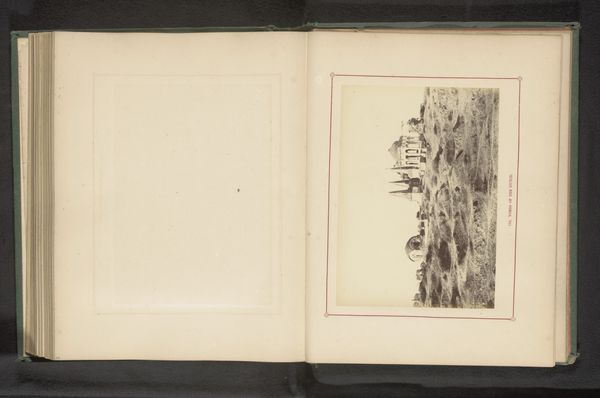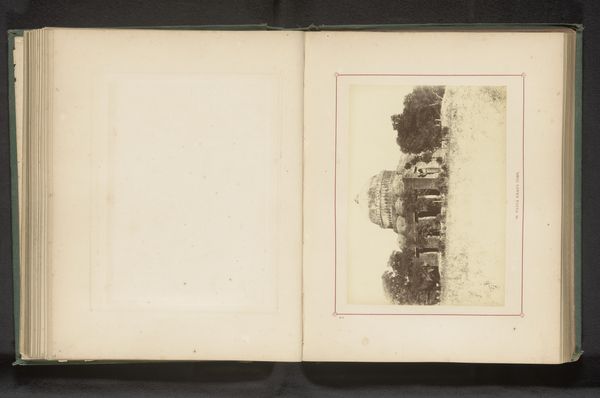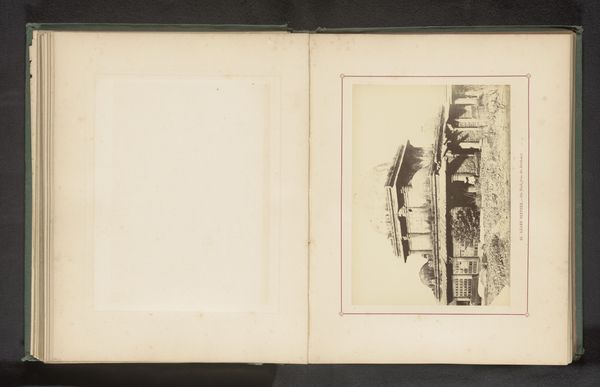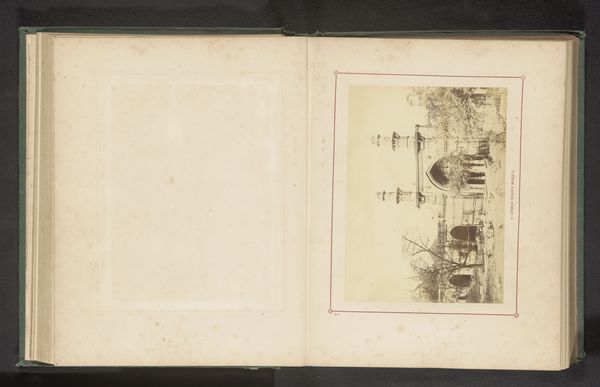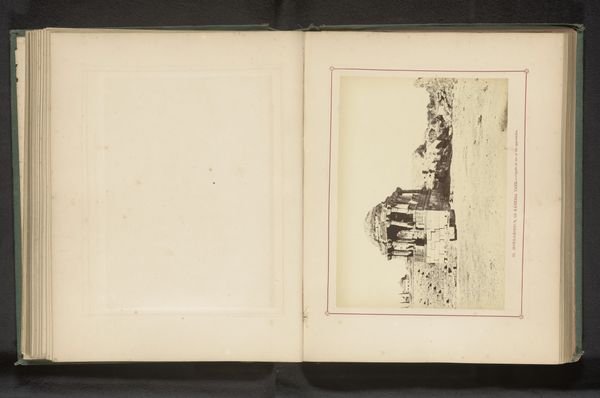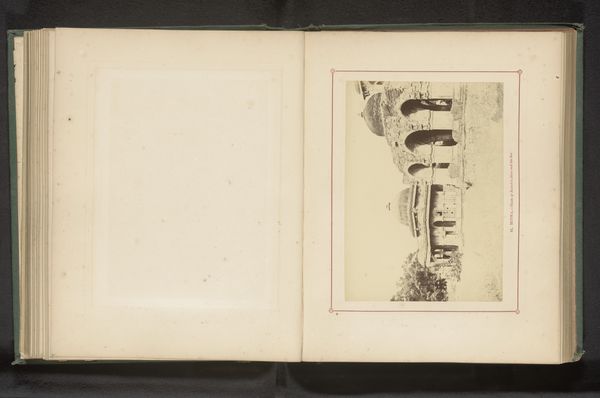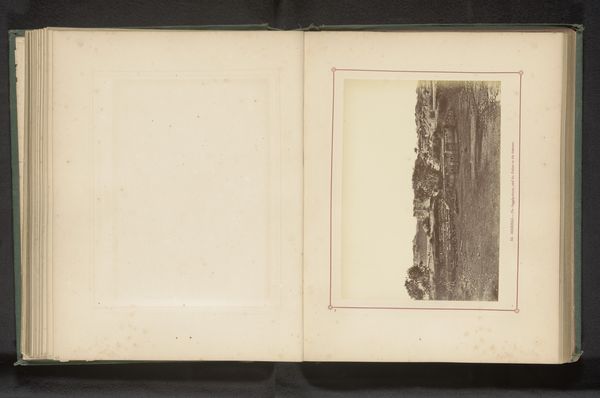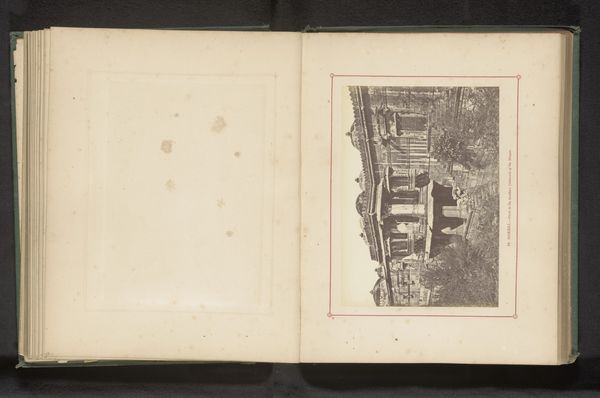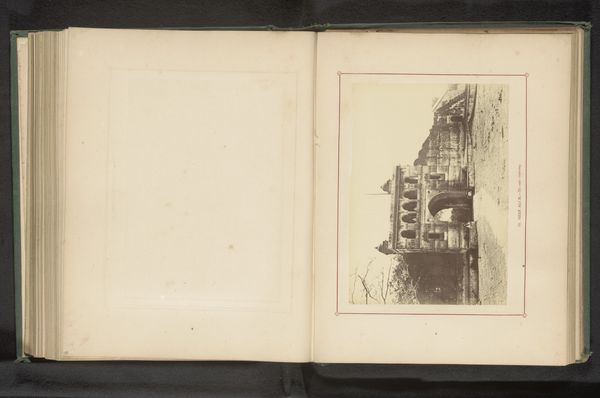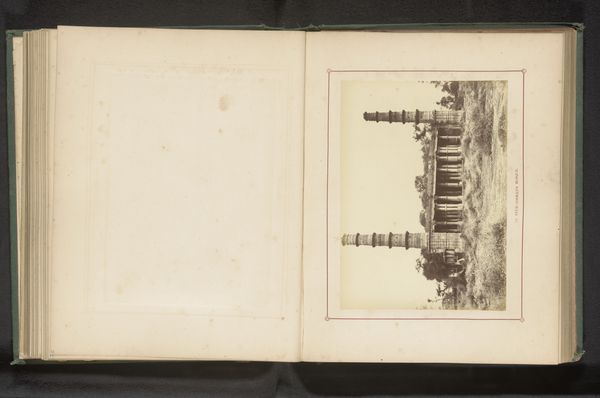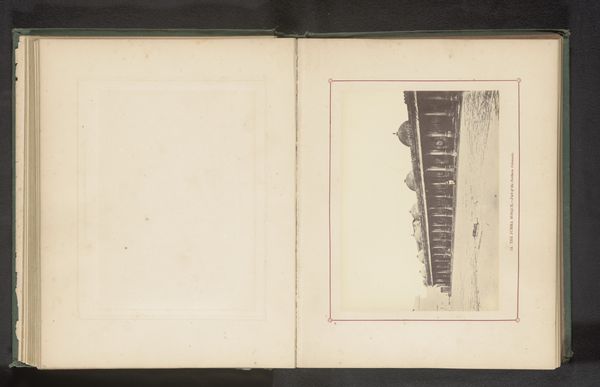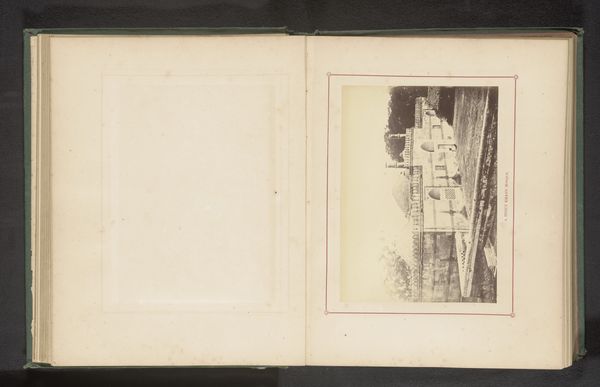
print, photography, albumen-print
#
aged paper
#
homemade paper
#
ink paper printed
# print
#
sketch book
#
hand drawn type
#
landscape
#
photography
#
personal sketchbook
#
hand-drawn typeface
#
fading type
#
sketchbook drawing
#
islamic-art
#
sketchbook art
#
albumen-print
Dimensions: height 136 mm, width 188 mm
Copyright: Rijks Museum: Open Domain
This photograph of tombs and a mosque near Ahmedabad was captured by Thomas Biggs. It is one of many produced using the wet collodion process, a nineteenth-century technique that demanded speed and precision. In this method, a glass plate was coated with a light-sensitive emulsion right before exposure, meaning the photographer had to work swiftly. This was especially challenging in a place like India, where Biggs worked. Given the cumbersome equipment and the volatile chemicals involved, we can appreciate the labor and skill required to produce this image. Photography in the colonial era was as much about documentation as it was about artistry. This image reflects a desire to capture and categorize distant lands and cultures, and was inherently tied to the processes of imperial expansion and control. But beyond its documentary value, the photograph also presents a considered composition, revealing Biggs’ artistic sensibility. Thinking about the physical process and the socio-political context allows us to appreciate the many layers of meaning embedded in this seemingly straightforward image.
Comments
No comments
Be the first to comment and join the conversation on the ultimate creative platform.
